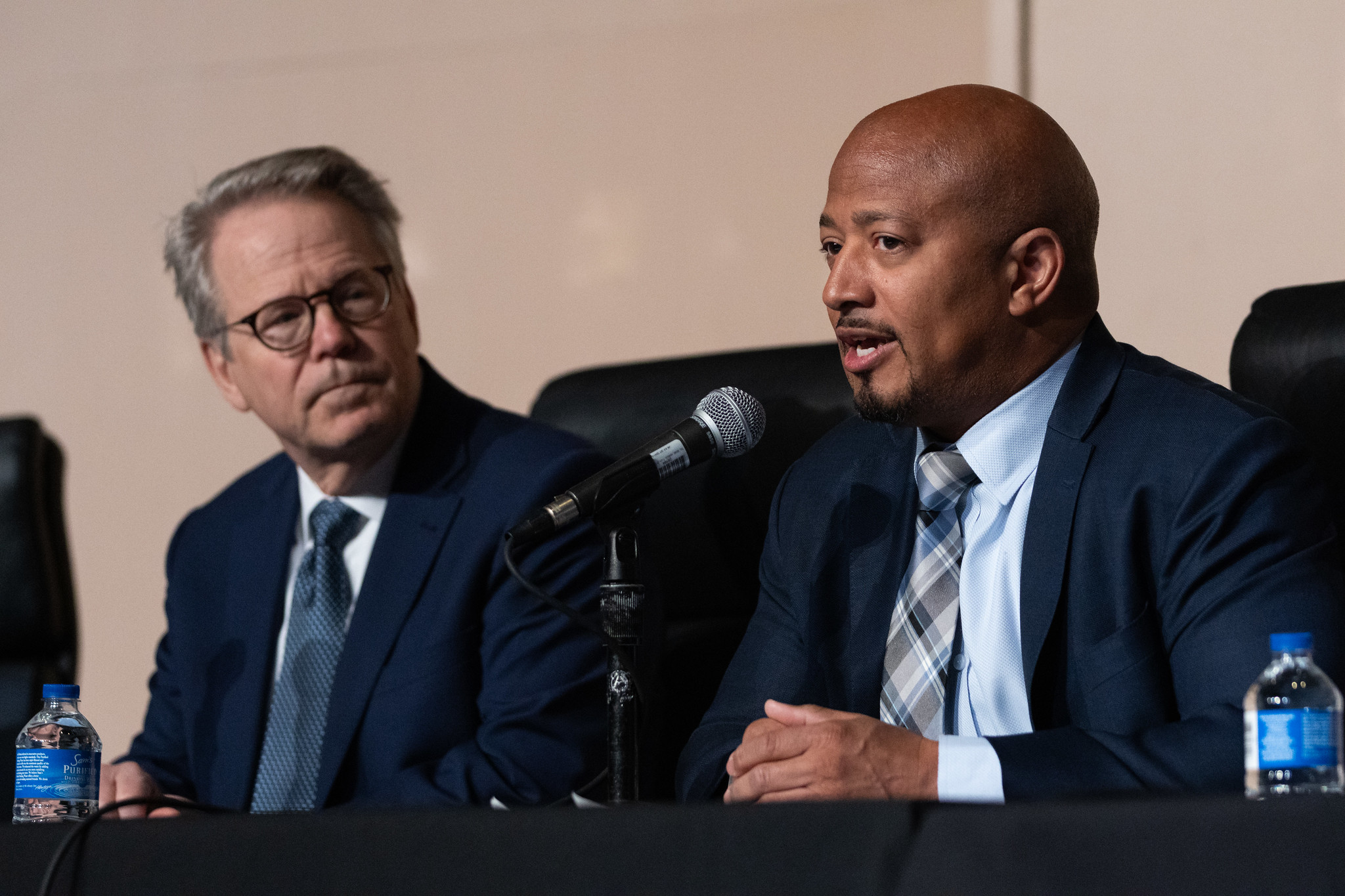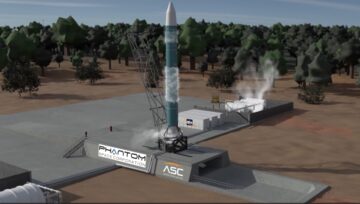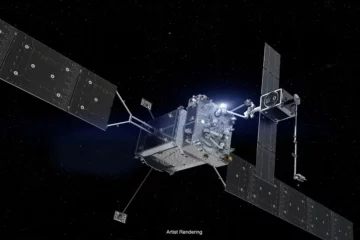
COLORADO SPRINGS — The Office of Space Commerce will set up operations centers in Colorado and Maryland for its civil space traffic coordination system.
During a panel at the 39th Space Symposium April 11, Richard DalBello, director of the Office of Space Commerce, announced that the primary operations center for the Traffic Coordination System for Space (TraCSS) will be at the David Skaggs Research Center, operated by the National Oceanic and Atmospheric Administration (NOAA) in Boulder, Colorado. A secondary center will be at another NOAA facility in Suitland, Maryland.
While the Boulder center will be the primary location, the Suitland site will be up and running first, said Sandy Magnus, chief engineer for TraCSS, in an interview after the panel. In Suitland, the office is able to take over a room from another program, while the Boulder facility will require some renovations first. When both centers are up and running, the Boulder center will largely handle operations while Suitland will handle systems engineering and IT support.
The centers will operate around the clock but rely heavily on automation. “We’re starting small, intentionally,” she said, with a few people staffing each center. “That will probably increase as the capabilities that we onboard increase.”
The office is taking a phased approach to TraCSS, with an initial phase 1.0 set to begin beta testing with a limited number of users by the end of the current fiscal year. TraCSS will incrementally add capabilities in phase 1, which is focused on space traffic coordination services such as conjunction notices. Later phases will include launch collision avoidance assessments and reentry assessments.
During the panel, DalBello said development of TraCSS was on schedule despite several challenges, like finding the right people. “The kind and quality of people you need to implement a program like this are not already resident at the Commerce Department and they’re not easy to find in the marketplace,” he said. “The number one challenge is hiring the right quality people.”
A second challenge, he said, was convincing the department to adopt new, more agile acquisition approaches for TraCSS. “We do have senior-level support for this, but still, the processes weren’t set up to do an agile development program,” he said. “We thought it was essential to the success of the program that we do it in a different manner.”
DalBello said he has also been focusing on international coordination of TraCSS with other national space situational awareness (SSA) systems. The Office of Space Commerce issued a document April 8 outlining its vision for global SSA coordination that advocates for standards and best practices for sharing SSA information.
The Office of Space Commerce is establishing TraCSS in response to Space Policy Directive 3 in 2018, which directed that the Commerce Department take over civil space traffic coordination responsibilities currently handled by the Defense Department, allowing the DoD to focus on its specific needs in space domain awareness.
DalBello and Travis Langster, principal director of space and missile defense policy at the Defense Department, said on the panel that teams from the two departments are meeting weekly to discuss issued related to that transfer of responsibilities. That also includes discussions about roles of the two departments after that transfer is complete.
“One of the things that I’m looking at is ensuring no degradation of services from what’s currently being provided,” Langster said. “We need to make sure this is a phased transition, deliberate, and providing the information that is most valuable to those who operate in the domain.”
“There’s not going to be a ‘light switch’ type of moment,” he said of the transition of space traffic coordination work to the Office of Space Commerce. “There’s probably going to be some overlap where we’re both delivering services and capabilities just to work out all the processes and ensure that we’re all comfortable with what’s being delivered.”
- SEO Powered Content & PR Distribution. Get Amplified Today.
- PlatoData.Network Vertical Generative Ai. Empower Yourself. Access Here.
- PlatoAiStream. Web3 Intelligence. Knowledge Amplified. Access Here.
- PlatoESG. Carbon, CleanTech, Energy, Environment, Solar, Waste Management. Access Here.
- PlatoHealth. Biotech and Clinical Trials Intelligence. Access Here.
- Source: https://spacenews.com/office-of-space-commerce-selects-locations-for-tracss-operations-centers/
- :has
- :is
- :not
- :where
- $UP
- 1
- 11
- 2018
- 8
- a
- Able
- About
- acquisition
- add
- administration
- adopt
- advocates
- After
- agile
- All
- Allowing
- already
- also
- an
- and
- announced
- Another
- approach
- approaches
- April
- ARE
- around
- AS
- assessments
- At
- atmospheric
- Automation
- awareness
- BE
- been
- begin
- being
- BEST
- best practices
- beta
- both
- but
- by
- capabilities
- Center
- Centers
- challenge
- challenges
- chief
- civil
- Clock
- collision
- Colorado
- comfortable
- Commerce
- complete
- conjunction
- convincing
- coordination
- Current
- Currently
- David
- Defense
- Defense Department
- delivered
- delivering
- Department
- departments
- Despite
- Development
- different
- directed
- Director
- discuss
- discussions
- do
- document
- DoD
- domain
- each
- easy
- end
- engineer
- Engineering
- ensure
- ensuring
- essential
- establishing
- Facility
- few
- Find
- finding
- First
- Fiscal
- Focus
- focused
- focusing
- For
- from
- Global
- going
- handle
- handled
- Have
- he
- heavily
- Hiring
- HTTPS
- implement
- in
- include
- includes
- Increase
- information
- initial
- intentionally
- Interview
- Issued
- IT
- IT Support
- ITS
- jpg
- just
- Kind
- largely
- later
- launch
- like
- Limited
- location
- locations
- looking
- make
- manner
- marketplace
- Maryland
- meeting
- moment
- more
- most
- National
- Need
- needs
- New
- no
- number
- of
- Office
- on
- Onboard
- ONE
- operate
- operated
- Operations
- Other
- out
- outlining
- over
- overlap
- panel
- People
- phase
- Phased
- phases
- plato
- Plato Data Intelligence
- PlatoData
- policy
- practices
- primary
- Principal
- probably
- processes
- Program
- provided
- providing
- quality
- related
- rely
- require
- research
- response
- responsibilities
- Richard
- right
- roles
- Room
- running
- Said
- sandy
- schedule
- Second
- secondary
- selects
- Services
- set
- several
- sharing
- she
- site
- small
- some
- Space
- specific
- staffing
- standards
- Starting
- Still
- success
- such
- support
- sure
- Symposium
- system
- Systems
- Take
- taking
- teams
- Testing
- that
- The
- the information
- things
- this
- those
- thought
- to
- traffic
- transfer
- transition
- two
- type
- users
- Valuable
- vision
- was
- we
- weekly
- when
- which
- while
- WHO
- will
- with
- Work
- work out
- year
- you
- zephyrnet









